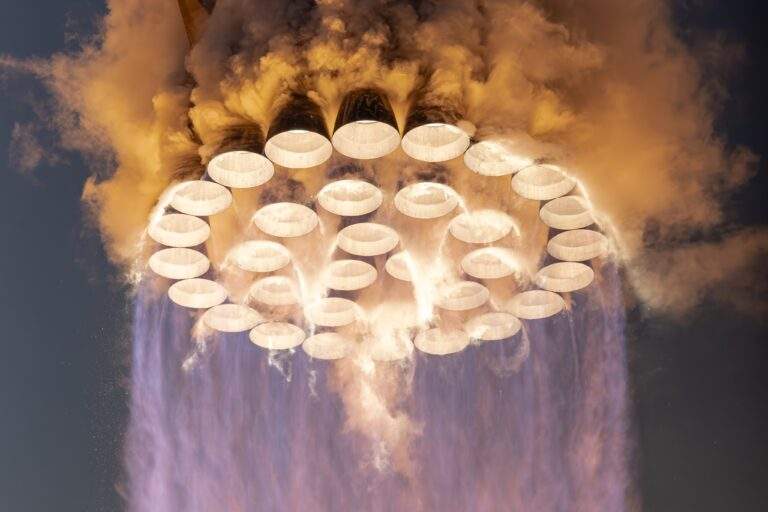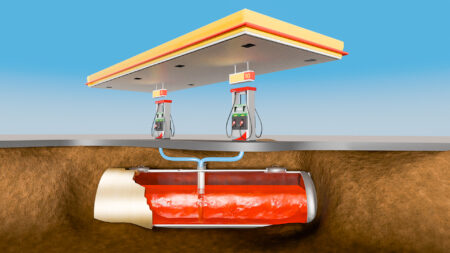In the year 2000, a Russian rocket launched from Kazakhstan carrying one of the first pieces of the International Space Station into orbit. This was the beginning of a fantastic partnership between the US and Russia – and one of the most extraordinary achievements in spaceflight. Although this may look like a normal rocket launch, on the side of the rocket was a giant Pizza Hut logo.
This was part of an ad campaign where Pizza Hut paid 1 million dollars for Russian cosmonauts to eat their Pizza in space and to have their logo displayed on the side of the rocket. It’s one of the few examples we’ve ever seen where a rocket has any kind of livery on it. But why don’t we see ads on the side of rockets more often?

Advertisement
In the modern world of internet and television, advertisements are everywhere: sporting events, tourist attractions, movies, transportation. Anything that has a lot of eyes on it will usually attract advertisement. The 2019 Super Bowl was watched by 100 million people and the cost for a 30 second commercial was around 5 million dollars. The world of advertising usually finds its way onto things that are seen by large audiences. Look at Formula 1 teams, those cars are covered in sponsors – and brands make up for most of the funding for each team.
But spaceflight is no stranger to large audiences. The first Moon landing in 1969 was watched by a record breaking 600 million people, the Space Shuttle launches were often broadcast on TV stations around the world and the first Falcon Heavy test flight was viewed by millions of people online. Despite the worldwide attention, advertisements never found their way to these important spaceflight events.
NASA restrictions
Due to NASA being a government agency, it has a restrictive policy which stops astronauts and other employees from endorsing products. Since the beginning of the Space Shuttle program, NASA has been sending M&M’s up to the space station for astronauts to eat. However, instead of referring to them as M&M’s, astronauts have to call them ‘candy-coated chocolates’. NASA has to go out of their way to not seem like it’s promoting a product or brand. So slapping a big TikTok logo on the side of a rocket is out of the question.
The Science and Technology Institute estimated that NASA could make around 100 million dollars in revenue if they agreed to do sponsorship and advertisement deals. After all, they are absolutely massive, and the NASA logo is seen on t-shirts all over the world. However, this is an insignificant amount when it comes to doing business in space. It costs NASA around 4 BILLION dollars each year to operate the ISS and it would take hundreds of multi-million dollar endorsements to offset that cost. In the end, NASA isn’t set up to be a money making machine.
The Russian Space Agency
The Russian’s on the other hand are far more open to the idea of advertisements. Russian cosmonaut Mikhail Tyurin famously hit a golf ball into orbit as part of a paid sponsorship for a Canadian golf company. In 1996, Russian cosmonauts took a giant Pepsi can into space to float outside the Mir Space station as part of Pepsi’s campaign to make the first commercial in space. They were also seen drinking Pepsi inside the space station and doing a live broadcast with the giant can.

This is nothing compared to what Pizza Hut were planning. In 2000, they were looking at the idea of projecting their logo onto the surface of the Moon using high powered lasers. After discussing the idea with physicists, they realised that the enormous amount of power and accuracy required to pull this off would be almost impossible, and it would require hundreds of millions of dollars to develop. Although it’s an embarassing idea for those that know anything about physics, it’s easy to imagine that these kind of conversations go on in even more companies.
Not to mention the logo would need to be the size of Texas to be even remotely visible on the Moon. Instead, Pizza Hut settled with the idea of displaying their new logo on the side of a Russian ‘Proton’ rocket.
New rocket companies
Apart from this ambitious advertising campaign, rocket companies have yet to open their doors to the world of sponsorships. But with the new wave of private companies getting into the spaceflight industry, this could change. Companies like SpaceX and Rocket Lab have drastically cut the cost of launching rockets. And with the online viewership of these launches growing in popularity, we could start to see sponsored liveries appearing on rockets, whether we like it or not.
So although the world of advertising has yet to make it’s way into spaceflight, we can only hope that the first step onto Mars isn’t sponsored by Pepsi.













Can you be more specific about the content of your article? After reading it, I still have some doubts. Hope you can help me.
Can you be more specific about the content of your article? After reading it, I still have some doubts. Hope you can help me.
Thanks for sharing. I read many of your blog posts, cool, your blog is very good.
Can you be more specific about the content of your article? After reading it, I still have some doubts. Hope you can help me.